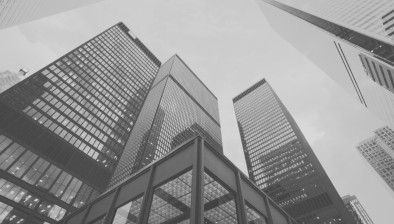Luke Hickmore: Should credit markets be worried about inflation?

Luke Hickmore
Luke Hickmore, investment director fixed income at Aberdeen Standard Investments (ASI), discusses the likely trajectory for inflation and interest rates in the coming months and the inevitable effect on credit markets.
In the first five months of the year, inflation has become a growing concern for markets. On credit markets, there’s been higher volatility in yields, and equity markets are now also seeing rising volatility. It seems unlikely that central bank support is the only reason for the credit market to remain calm, as we know this support will end, but we don’t know when.
But the mix of faster growth and rising inflation will surely lead to policy adjustments, including the dreaded taper – the tapering of monetary support that lead to a surge in yields, particularly in 2013.
The link between rising equity volatility and rising spreads is well established. However, this also does not help us come to an answer because the cost of insuring a credit portfolio has risen, but physical credit bonds haven’t seen yields moving from government yields. So the answer is likely to be that the credit market is yet to be convinced of the risks of a new higher-inflation regime.
The yield on credit and the yield on government bonds is the closest it’s been since the great financial crisis of 2009. This could continue for some time. However, there are reasons to expect a change. The summer months will see an increased exit from lockdown, bottlenecks in supply chains, margins squeezed as producer prices continue to climb, and it is likely that inflation will continue to surprise to the upside.
The risk is that inflation expectations will start to move away from central bank targets. The University of Michigan’s survey for inflation expectations one year ahead has risen to 4.6%; this has been a good indicator in the past. For inflation to take hold, there needs to be a sustained change in expectations; if prices rise one month, but not the next, that’s not inflation. But if inflation is expected to continue to rise, then wages will also need to rise to catch up, especially as the labour market continues to recover.
Then we could see some sustained inflation growth. This could all lead the market to expect rate rises from the Federal Reserve (Fed) sooner. Also, expectations may grow for when we reach the peak of rates in this cycle. The more the Fed lets inflation run hot, the more the market should expect a higher peak in rates this cycle. Rather than rates of 2.5%, can we now see the market start to price in 4% or even 5%?
If this turns out to be the case, I think this will be the point when we finally see credit react. No longer will large cash balances and declining leverage be the support pillars for credit spreads. Instead, the calm will be threatened by rising capital expenditure, companies gearing for a recovering economy and higher M&A activity.
Credit will also have to contend with Treasuries starting to provide a real return for investors. This doom and gloom for credit markets may, of course, be self-defeating, as the more the markets price for higher peak rates and higher inflation, the further yields move up, tightening financial conditions and doing the work of the Fed without it needing to react. We should also recognise the fragility of economies coming out of the pandemic – the growth spurt now could be just that, a short-term spurt.
For now, it seems sensible to be on the defensive side for credit markets – reduce the highest beta sectors, recognise that the lockdown-easing credits have almost played out as expected, and move into more defensive areas such as utilities and housing associations, plus asset-light credit areas such as lodging.
Credit markets should be wary of being complacent when the yield for credit has not reacted to the risk for inflation to start catching hold. Shifting to a more defensive bias now, at what seems to be the point in the cycle when credit looks most expensive, seems to be a sensible choice.







